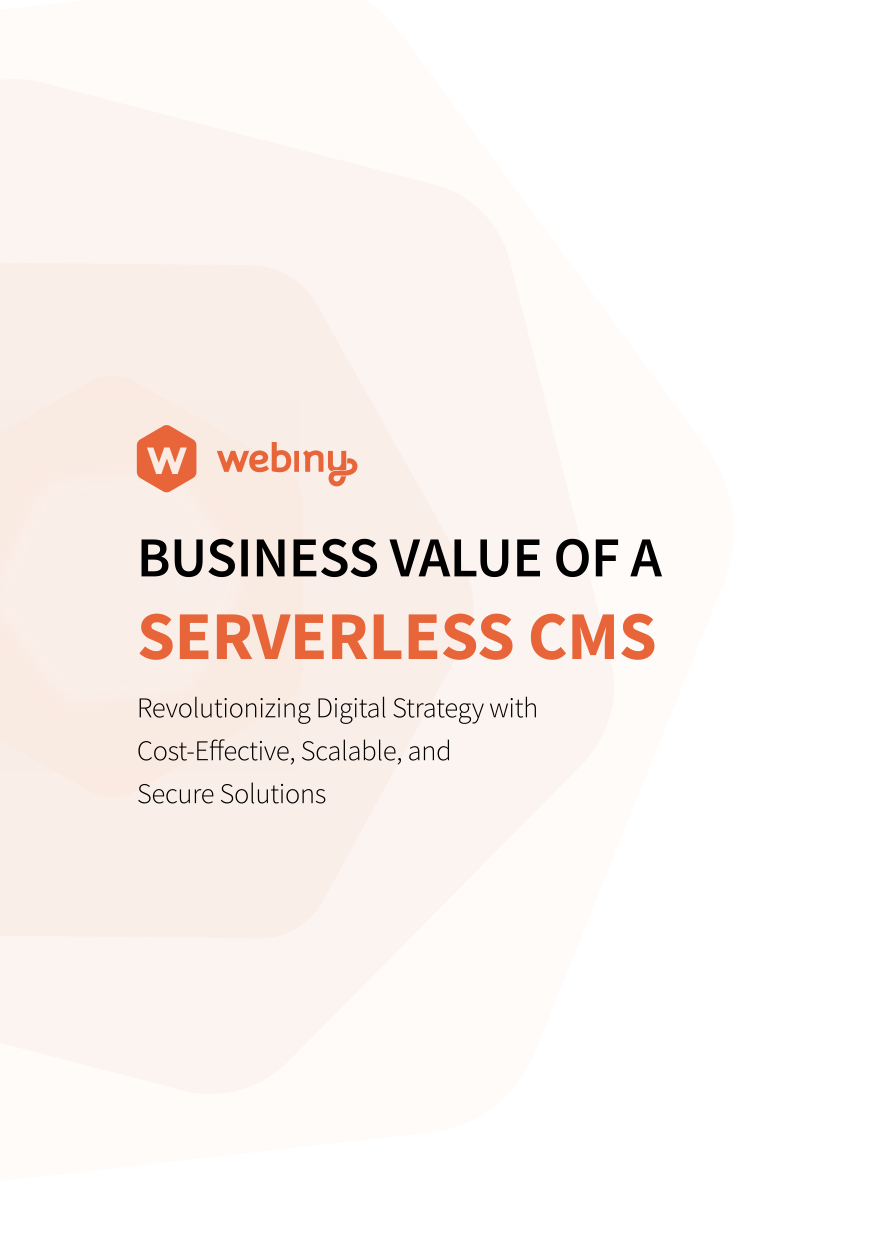BOOK A CALL
.svg)
A Serverless development framework that packs a punch
Accelerate your development journey with Webiny serverless development Framework. Crafted for efficiency and flexibility, it empowers developers to build, extend, and innovate on a robust serverless platform, streamlining the creation of bespoke digital experiences.
Typescript / React / Node: 100% JavaScript based code-base
CLI with CI/CD support and multi-environment deployment
Integration with Pulumi IaC to control and manage infrastructure stack
Routing, plugin system, webpack builds, watch commands, monorepo support, it’s all there
Build new features, change existing ones, or create whole new applications

A serverless development framework that meets your needs
Think of Webiny's Development Framework as a high-tech toolset for digital construction. Just as a builder uses tools to create custom structures, developers use this framework to construct unique web applications and sites, with the flexibility to add or change features as needed.
.svg)
Streamlined development experience
Webiny CMS and all our apps are built on top of this development framework. Developers can use it to build their own plugins and applications in a structured and maintainable way and have a great DX at the same time.
The framework, all of its dependencies, and components are maintained by our team, reducing the burden on your end and allowing you to focus on just your project, getting that ROI of adopting Webiny much more quicker. Click here to learn more about the framework.
Key Benefits
Developer-Centric Design
Intuitive Tools: Utilize familiar technologies like TypeScript, React, and Node for seamless development.
Streamlined Workflow: Benefit from an integrated CLI, supporting CI/CD and multi-environment deployment.
Robust Infrastructure
Streamlined Workflow: Benefit from an integrated CLI, supporting CI/CD and multi-environment deployment.
Comprehensive Support: Enjoy the support of a framework maintained by Webiny's team, reducing your workload.
Flexibility and Customization
Versatile Development: Build new features, modify existing ones, or create entirely new applications with ease.
Plugin System: Utilize a comprehensive plugin system for enhanced functionality and integration.
.svg)
Use the tools you know and love
We’ve built Webiny on top of many other successful open-source projects you probably are using today reducing the learning curve.
We’ve stayed in line with their established best practices and integrated them in ways that you’re able to re-use them inside your own custom Webiny projects and adapt their configuration to your needs.
.svg)
Explore other Webiny core
features
Self-hosted
Your data under your terms. A privacy-focused CMS.
Open source
Architected to be extended and customized.
AWS serverless infrastructure
Webiny runs on highly-scalable fault-tolerant serverless services.
Multi-tenancy
Host thousands of projects from a single instance
CMS+
No-code suite of solutions helping you create, manage and distribute content
FAQs
Webiny serverless development framework is designed for high levels of customization. It offers developers the flexibility to craft unique applications, perfectly tailored to specific business needs. With an array of tools and a plugin system, it supports diverse development goals, from small tweaks to building entirely new functionalities.
Serverless technology in the Webiny development framework brings significant efficiency and scalability benefits. It allows applications to automatically scale up or down based on demand, ensuring optimal resource use and performance. This technology reduces the overhead of managing servers, allowing developers to focus more on innovation rather than infrastructure.
The framework is built with ease of use in mind, employing familiar technologies like TypeScript, React, and Node.js. It includes an integrated command-line interface (CLI) and supports continuous integration and deployment (CI/CD), streamlining the development process. This approach makes it simpler for developers to adopt and efficiently work within the Webiny ecosystem.
Ready to get started?
For business teams
Discuss your business/project needs and CMS requirements
Get the answers to your specific business questions
See Webiny in action and learn how it can power your business
For developers
Install Webiny in just 4 minutes.
Learn how to create a new Webiny project and deploy it into your AWS account.
